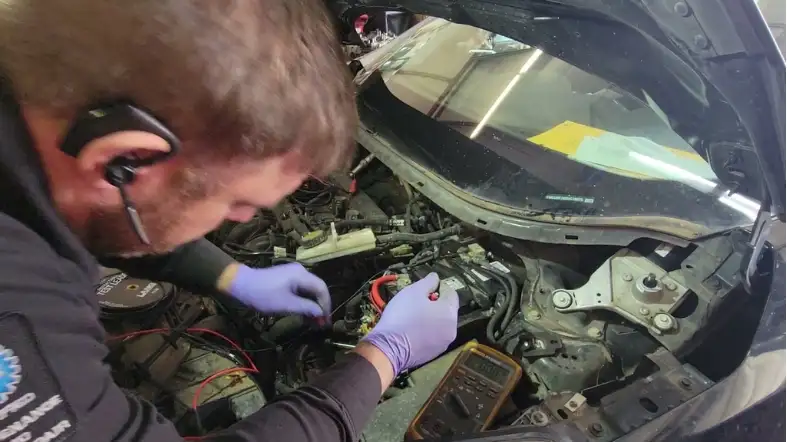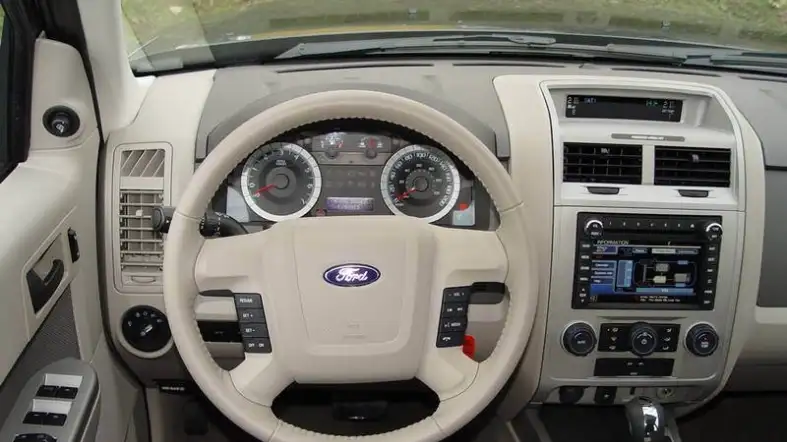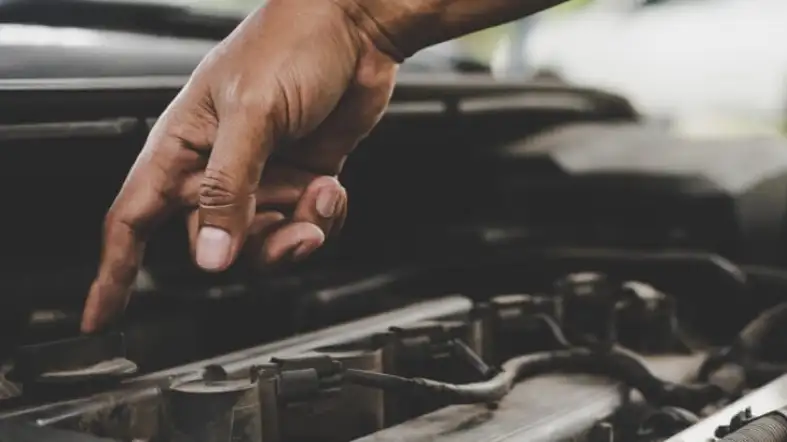The Ford Escape is a popular SUV known for its reliable performance.
However, some owners have reported experiencing intermittent starting problems, where the engine fails to start at times.
This issue can be frustrating and inconvenient, and it’s essential to identify the root cause to fix it.
In this blog, we will explore the common reasons behind the Ford Escape’s intermittent starting problem and provide some helpful tips to troubleshoot and resolve the issue.
Understanding the intermittent starting problem in Ford Escape
Difficulty starting your Ford Escape can be frustrating, especially when it happens intermittently. This issue can be caused by a variety of factors like,

Battery Health Check
Before you take your Ford Escape to a mechanic, check the battery’s health.
A weak battery can cause intermittent starting problems. Use a multimeter to test the battery’s voltage.
If the battery voltage drops below 12 volts, it needs to be recharged or replaced.
Starter Motor Check
If the battery is in good condition, then the starter motor may be faulty. A faulty starter motor can cause intermittent starting problems.
Ignition Switch Check
If the battery and starter motor are working correctly, the issue may lie with the ignition switch.
If the ignition switch is faulty, it may not send power to the starter motor, causing intermittent starting problems.
Try jiggling the key while turning it in the ignition switch. If the engine starts, the ignition switch needs to be replaced.
Fuel Pump Check
Another possible cause of intermittent starting problems in the Ford Escape is a malfunctioning fuel pump.
The fuel pump sends fuel to the engine, and if it’s not functioning correctly, the engine won’t start.
Check if you can hear a humming sound from the fuel pump when you turn the key. If you don’t hear the humming sound, the fuel pump needs to be replaced.
Symptoms of intermittent starting problem in Ford Escape

Here are some symptoms that can help you identify an intermittent starting problem in your Ford Escape.
Battery Issues
If your Ford Escape is having an intermittent starting problem, check the battery first.
A weak battery can cause the engine to crank slowly or not start at all. Signs of a weak battery include dimming headlights or interior lights when the engine is cranking.
If the battery voltage drops below 12 volts, it needs to be recharged or replaced.
Starter Motor Issues
A faulty starter motor can cause intermittent starting problems in your Ford Escape.
If the starter motor is failing, the engine may not start, or it may start and then stall.
If you hear a clicking sound, but the engine does not start, the starter motor is likely the problem. The starter motor may need to be replaced.
Ignition Switch Issues
If the battery and starter motor are in good condition, the issue may lie with the ignition switch.
If the ignition switch is faulty, it may not send power to the starter motor, causing intermittent starting problems.
Try jiggling the key while turning it in the ignition switch. If the engine starts, the ignition switch needs to be replaced.
Fuel Pump Issues
Another possible cause of intermittent starting problems in the Ford Escape is a malfunctioning fuel pump.
The fuel pump sends fuel to the engine, and if it’s not functioning correctly, the engine won’t start.
Check if you can hear a humming sound from the fuel pump when you turn the key. If you don’t hear the humming sound, the fuel pump needs to be replaced.
Diagnostic steps to identify the root cause of the problem

If you are experiencing intermittent starting problems with your Ford Escape, you can follow these diagnostic steps to identify the root cause of the problem:
Step 1: Check Battery
Check the battery voltage with a multimeter. A healthy battery should have a voltage reading of 12.6 volts or higher.
If the voltage reading is lower than 12 volts, the battery may need to be recharged or replaced.
Step 2: Check Battery Connections
Check the battery connections for corrosion, loose connections, or damaged cables. Clean and tighten any loose connections or replace the damaged cables.
Step 3: Check Starter Motor
If the battery is in good condition, check the starter motor. Turn the key and listen for a clicking sound.
If the starter motor clicks but the engine does not start, the starter motor may be faulty.
Step 4: Check Ignition Switch
If the starter motor is working correctly, check the ignition switch.
Try jiggling the key while turning it in the ignition switch. If the engine starts, the ignition switch may be faulty.
Step 5: Check Fuel Pump
If the battery, starter motor, and ignition switch are working correctly, check the fuel pump.
Turn the key to the on position and listen for a humming sound coming from the fuel pump. If you don’t hear the humming sound, the fuel pump may be faulty.
Step 6: Check Fuel Filter
If the fuel pump is working correctly, check the fuel filter.
A clogged fuel filter can prevent fuel from reaching the engine, causing starting problems. Replace the fuel filter if necessary.
Troubleshooting tips and techniques to fix the starting problem

After identifying the root cause of the intermittent starting problem in your Ford Escape, you can follow these troubleshooting tips and techniques to fix the problem:
Step 1: Recharge or Replace the Battery
If the battery voltage reading is lower than 12 volts, you need to recharge or replace the battery.
Before doing this, check the battery connections for corrosion, loose connections, or damaged cables.
Clean and tighten any loose connections or replace the damaged cables. If the connections are fine, recharge or replace the battery.
Step 2: Replace the Starter Motor
If the starter motor clicks but the engine does not start, you need to replace the starter motor.
Before doing this, make sure that the battery is in good condition and that the battery connections are clean and tight.
To replace the starter motor, disconnect the negative battery cable and remove the bolts that hold the starter motor in place.
Disconnect the wires and remove the starter motor.
Step 3: Replace the Ignition Switch
If jiggling the key while turning it in the ignition switch makes the engine start, you need to replace the ignition switch.
Before doing this, make sure that the battery, starter motor, and battery connections are in good condition.
To replace the ignition switch, disconnect the negative battery cable and remove the steering column covers. Disconnect the wires and remove the ignition switch.
Step 4: Replace the Fuel Pump
If you don’t hear a humming sound coming from the fuel pump when you turn the key to the on position, you need to replace the fuel pump.
Before doing this, make sure that the battery, starter motor, ignition switch, and battery connections are in good condition.
To replace the fuel pump, disconnect the negative battery cable and relieve the fuel system pressure.
Disconnect the fuel lines and electrical connections and remove the fuel pump assembly.
Step 5: Replace the Fuel Filter
If the fuel filter is clogged, you need to replace it.
Before doing this, make sure that the battery, starter motor, ignition switch, fuel pump, and battery connections are in good condition.
To replace the fuel filter, locate the fuel filter and disconnect the fuel lines. Remove the fuel filter and install the new fuel filter.
FAQs
Can I Fix The Intermittent Starting Problem In Ford Escape By Myself?
Yes, you can fix the intermittent starting problem in Ford Escape by yourself if you have the required tools and knowledge.
If you’re not comfortable with fixing the problem, take your vehicle to a trusted mechanic for assistance.
How Much Does It Cost To Fix The Intermittent Starting Problem In Ford Escape?
The cost to fix the intermittent starting problem in Ford Escape can vary depending on the root cause of the problem and the cost of replacement parts.
It’s best to get a quote from a trusted mechanic before proceeding with the repairs.
Can I Prevent The Intermittent Starting Problem In Ford Escape?
You can prevent the intermittent starting problem in Ford Escape by regularly maintaining your vehicle and keeping an eye on the battery voltage, battery connections, starter motor, ignition switch, fuel pump, and fuel filter.
Conclusion
The intermittent starting problem in Ford Escape can be frustrating and inconvenient, but it’s not an uncommon issue.
By understanding the symptoms, diagnostic steps, and troubleshooting techniques, you can identify and fix the problem yourself or with the help of a mechanic.
Regular maintenance and upkeep of your vehicle can also help prevent this issue from occurring in the future.
